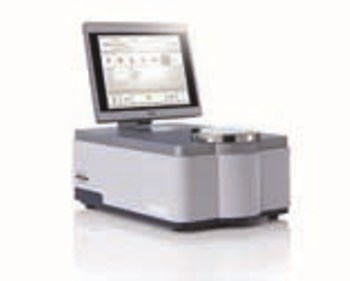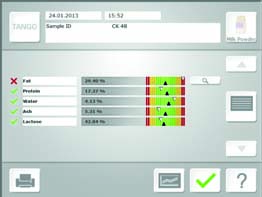Fighting Food Fraud – FT-NIR For Targeted and Non-Targeted Adulterant Screening
 Maintaining brand reputation and product quality has led to increased focus on qualifying raw materials and ingredients used in food production. In addition to traditional quality parameters like moisture, fat, and protein, detection of adulterants plays a critical role in ensuring food safety and quality. The USP (US Pharmacopeial Convention) Food Fraud Database currently lists hundreds of incidents of economically motivated adulteration (EMA), substitution, counterfeiting or mislabeling of food products.
Maintaining brand reputation and product quality has led to increased focus on qualifying raw materials and ingredients used in food production. In addition to traditional quality parameters like moisture, fat, and protein, detection of adulterants plays a critical role in ensuring food safety and quality. The USP (US Pharmacopeial Convention) Food Fraud Database currently lists hundreds of incidents of economically motivated adulteration (EMA), substitution, counterfeiting or mislabeling of food products.
FT-NIR offers a valuable tool for screening almost any raw material with an unrivaled ease-of-use. The high information content of NIR spectra provides a finger print of the complete sample. Comparing the spectra of the incoming raw materials with those measured using samples of known quality permits a non-targeted screening of adulterants or contaminants within the detection limits. If a material is tested positive by FT-NIR, further investigations with complementary methods can be carried out to determine the identity of the adulterant.
 Bruker FT-NIR spectrometers offer a fast and effective tool for quality control of raw materials, intermediate products and final products. As a non-destructive method without any sample preparation it is already extensively used in the food industry for analyzing main constituents such as protein, moisture, fat, lactose, ash, and fiber.
Bruker FT-NIR spectrometers offer a fast and effective tool for quality control of raw materials, intermediate products and final products. As a non-destructive method without any sample preparation it is already extensively used in the food industry for analyzing main constituents such as protein, moisture, fat, lactose, ash, and fiber.
With the measurement of a single spectrum the sample can be evaluated in a three-step process:
- Identification: Identification of a sample is carried out to determine if the spectrum of an incoming raw material fits within the statistical population of authentic and previously accepted batches, i.e. if the correct raw material was delivered and properly labeled.
- Conformity: In the next step a conformity test is applied. Each data point of the NIR spectrum is subject to a dedicated test with an individual threshold. This check for conformity at each data point allows a real fingerprinting of the material with adjustable sensitivity.
- Quantification: During the quantification of the different constituents an outlier test based on the Mahalanobis Distance is performed. Again the analysis spectrum is compared to the sample population in the individual quantification models.
Bruker Optics powerful software combines these individual evaluation tools to a single routine with a simple output: Green checkmark if all analyses are OK, red cross if the sample has failed the test.

































